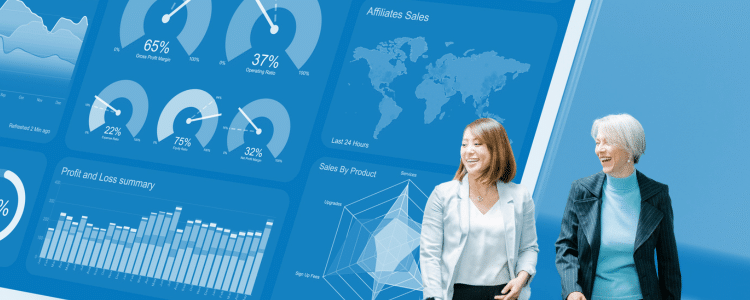In today’s data-driven world, the quality of your information is everything.
Today, we’re sharing data hygiene best practices that your team must adopt prior to a digital transformation or ERP implementation. By following these best practices, your project team can ensure your new software provides stakeholders with actionable, reliable insights.
What is Data Hygiene?
Think of data hygiene as the meticulous cleansing of your information ecosystem. Inaccurate, incomplete, and inconsistent data – the digital equivalent of contaminated water – will pollute your decision-making and drain resources.
Imagine basing strategic decisions on faulty intel – inaccurate customer demographics, misrepresented inventory levels, or flawed market analyses. The consequences can be severe: missed opportunities, misdirected investments, and even reputational damage.
Software Selection & Process Improvement Case Study
In helping the client get its project back on track, one of our primary focus areas was decreasing their customization needs by improving their processes to align with the system's best practices.
The Importance of Data Hygiene
Data hygiene must be a core strategic imperative, championed by the C-suite. It isn’t just an IT concern. By prioritizing data hygiene, executives can unlock a cascade of benefits:
- Eliminating Organizational Siloes: Clean data breaks down data barriers and enables seamless collaboration based on a single source of truth.
- Driving Continuous Improvement: With reliable data, department leaders can make data-driven decisions that optimize workflows and enhance customer experiences.
- Increasing Agility: Accurate, real-time data allows businesses to respond quickly and effectively to market changes, competitor moves, and customer demands.
- Making More Accurate Predictions: Predictive analytic tools can surface valuable insights when they have access to reliable data. These tools can forecast future trends and anticipate customer needs with accuracy.
The Data Hygiene Playbook: Your Guide to a Successful Digital Journey
1. Conduct a Data Audit
Imagine your customer database is riddled with duplicate entries and outdated email addresses. If this data were migrated to a new CRM system, the system would be limited in its ability to improve the customer experience.
We recommend analyzing your data across all sources, identifying inaccuracies, duplicates, and outdated information. Tools like data profiling and anomaly detection can be invaluable allies in this process.
2. Implement Data Cleansing Techniques
Once you’ve identified the problems, it’s time to roll up your sleeves and get to work.
While manual data cleansing might be manageable for small datasets, it quickly becomes impractical as your data volume grows.
That’s where automation tools come in handy. From automated data validation at the point of entry to machine learning-powered anomaly detection, these tools can significantly reduce your workload and improve data quality.
Our computer software expert witnesses will attest that it’s imperative to begin the data cleansing process early in your project, so your data is fully prepared for migration to the new system.
3. Establish Standardized Data Collection Practices
Once your data is clean, you need to figure out how to keep it that way.
While you might be implementing one of the top ERP systems, this doesn’t mean your data will take care of itself.
Before ERP deployment, you must define clear guidelines for data entry, including acceptable formats, required fields, and best practices for capturing information.
One strategy is to create standardized templates for data entry across different departments to ensure all forms use identical field names and formats.
Many ERP systems have built-in validation and mandatory fields, and in many cases, these fields don’t even need to be manually updated as the system enables automatic, real-time data capture.
4. Implement Data Governance Policies
Data hygiene isn’t a one-time effort; it requires ongoing commitment and proactive measures.
Establishing data governance policies provides a framework for maintaining data quality over time. These policies should address data ownership, access controls, retention schedules, and processes for updating and modifying data.
5. Foster a Culture of Data Quality
Ultimately, data hygiene thrives in a culture that values and prioritizes accurate information.
To build this culture, you must create awareness among your team about the importance of data quality and its impact on decision-making. At the same time, you should encourage employees to follow data hygiene best practices and raise concerns about potential issues.
Learn More About Data Hygiene Best Practices
Remember, data hygiene is an ongoing journey, not a destination. By prioritizing regular audits, embracing automation, and fostering a culture of data quality, you can ensure your data is ready to propel your business forward.
To learn more, contact our business software consultants below.














